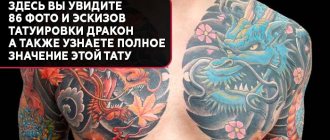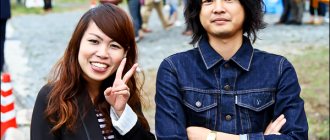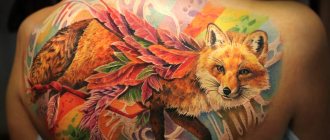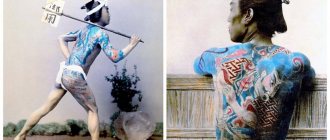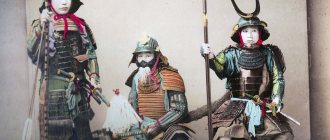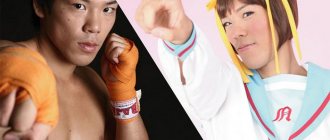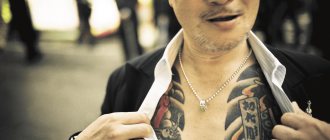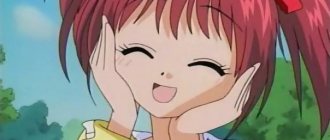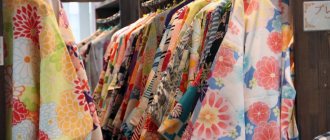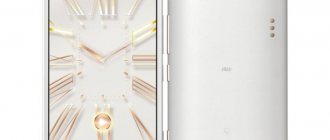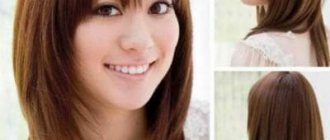Japan is an amazing country, famous for its ancient history, many customs and traditions. An integral part of this history are also Japanese tattoos, which in ancient times indicated position in society and social status. At the moment, such tattoos represent a separate style, which is distinguished by its bright colors and variety of designs.
The meaning of a pagoda tattoo
The building has several tiers-floors with its own roof. This is a majestic structure that demonstrates strength and power. The images have a double meaning - a symbol of grandeur and homeliness. Getting a tattoo emphasizes willpower, self-organization, and the desire for development.
Tattoo designs often include the surrounding landscape. A tattoo with a Japanese pagoda surrounded by mountains has the meaning of inner peace. The image of the structure personifies the philosophical principle - the cyclical nature of life. The shape of the building demonstrates the order in the world order.
Drawings in bright colors look impressive and symbolize the order of the universe, the desire for honesty and justice. Japan style implies a large application area. Images are performed on the arms, back, and chest. A sleeve is often ordered on the arm. The pagoda against the backdrop of a mountain landscape looks beautiful on the side of the chest or back.
Japan is an amazing country, famous for its ancient history, many customs and traditions. An integral part of this history are also Japanese tattoos, which in ancient times indicated position in society and social status. At the moment, such tattoos represent a separate style, which is distinguished by its bright colors and variety of designs.
Tattoo style Japan: history of origin
Japanese style tattoos have their origins several centuries ago. The first body drawings were applied in two cases: to brand a criminal, and to indicate a person’s social class. They were applied to the body using plant thorns as a tool.
Japanese tattoo style is most often associated with bright colors, dragons, samurai and Koi carp.
Over time, closer to the Middle Ages, Irezumi style tattoos (ink injection) began to attract geishas, then lovers and priests. Later, drawings began to be used as amulets and display information about who a person is, down to the type of activity and number of children. As a result, Japanese tattoos have become a part of everyday life.
The meaning of a Japanese style tattoo
Any tattoo done in this style carries its own meaning and meaning. In addition to the wide variety of colors and designs, the Japanese theme fascinates with its semantic message. Let's take a closer look at the most popular motifs and their meaning.
Samurai
The samurai is a symbol of a fearless, strong-willed person who is not afraid of the difficulties and dangers that lie ahead.
In the past, the samurai was the symbol of a gang or group.
Masks
Since ancient times, the mask has been considered a strong amulet for its owner against black magic, including the evil eye.
In Japanese style, masks of demons and spirits are most often depicted.
Koi Carp
Koi carp is a symbol of calm, determination and hard work.
Japanese tattoos for men
The people of Japan attach special importance to the place where the tattoo is applied. Depending on the size and shape of the sketch, they carefully select the place where the design will be printed: on the shoulder, on the arm, on the leg, on the back. Let's look at the most successful locations for male Japanese tattoos.
The shoulder is an ideal place for small tattoos of animals or samurai.
The forearm is a place on the hand where you can place a composition of several sketches. At this place you can depict a samurai or wild animals to indicate the character and life principles of the man.
On your wrist you can place a tattoo with the image of a tiger, snake, carp, dragon face with the addition of plant elements.
The lateral edges of the palm, hands, fingers - these places are characterized by Japanese hieroglyphs, with a certain meaning, a small dragon or snake.
The sleeve is a great place to embody the Japanese style of tattoo. Here, without limiting yourself to the size of the picture, you can arrange several animals, characters or patterns.
The neck is a typical place for tattoo inscriptions in Japanese with hidden meaning, or parts of the body of animals: paws, footprints, muzzle.
On the side you can place a larger tattoo with a light character. Animals that you want to imitate or samurai, to cultivate experience and strength in yourself, will be excellent options for placement on the ribs.
The back is a good place for the largest sketches. Here you can print several types of animals, flowers and trees, a drawing of a samurai or a mask. This tattoo option always surprises with its scale and brightness.
The energy center that is responsible for a man’s ego is located between the man’s shoulder blades. Therefore, tattoos in the form of a turtle or plants that carry the meaning of wisdom and tolerance can be placed on the shoulder blades.
You can place any animal on your leg: a fish, a snake or a tiger, as well as a drawing of a warrior. A tattoo on the leg can motivate a man to advance and make the right decisions.
A Japanese-style tattoo on the thigh can be a reference to a man's personal life. As a symbol of courage, you can place carp here, a wild animal as a symbol of passion, or a peony as a symbol of masculinity.
Tattoos located on the chest have a protective nature. A design of a dragon or tiger, decorated with a floral pattern, will be successfully placed on the sternum.
The meaning of tattoos
Japanese tattoos, the meaning of which has a deep philosophical meaning, have always fascinated with bright colors, amazing animals, and mysterious inscriptions.
- Flowers
Peony is a symbol of wealth, moneyBlack and Gray Samurai and Dragon Tattoo
Whatever the color, a Japanese samurai tattoo still looks amazing! This is done using the Tebori style. Yakuza usually have this art tattooed all over their body. I love this black and gray samurai tattoo.
Full back samurai tattoo with stunning details
Everything here is very detailed. I love it when artists put so much information and importance into their work.
Samurai with clouds and waves tattoo
This is an unfinished samurai tattoo, but already looks great with the added wave and cloud effect. For interesting cloud tattoos, check out. Despite the small size, the mask detail is still good.
Samurai tattoo with skull armor
The blue ink of this tattoo makes him look alive.
The detail is incredible despite its size, which is only half a sleeve. Sakura (flowers) – transience of life, humility. Sakura is in bloom for only two days.Chrysanthemum symbolizes longevity. The flower is resistant to cold weather and blooms for a long period in the fall.
Japanese maple is especially popular
- Animals
The most common ones in the Japanese tattoo category are dragons, tigers and carps.Simple antique and traditional samurai tattoo
This tattoo looks like you are looking at a pencil sketch.
Amazing black and gray samurai tattoo
I love all the details of this black and gray tattoo and the smoke effect. Samurai tattoo by Chris Phelps. The artist loves Japanese and oriental tattoos all over the world.
Yakuza with traditional samurai tattoo
One of the good samurai tattoos, you rarely see a skeleton face sitting with a hawk on his knees. This tattoo displays the image of a samurai, representing strength and courage. The armor has some incredible details. The hand gestures of this samurai are interesting.
Carp is a symbol of endurance, perseverance and courage.
Dragons are symbols of good luck and fortune. The Dragon also symbolizes the element Water, which is especially important for residents. Water is the main condition for growing rice.
What are the benefits of regular Japanese tattoos
?
Japanese tattoos appeared in our country relatively long ago. Despite this, for quite a long period of time they manage to maintain their leadership position and continue to remain the most popular and in demand in all countries of the world. And this is not surprising; moreover, such lively interest can be called completely justified and understandable.
Vintage photo of a Japanese man wearing a samurai tattoo
They capture so much character and mystery at the same time. Photo by Italian-British photojournalist Felix Beato.
Samurai with face tattoo
This is what samurai look like in old Japanese paintings. Samurai tattoo with katana and geisha. Samurai Geisha tattoo is quite common because these 2 are Japan's favorite traditional tattoos.
Samurai tattoo on horse and charging dragon
Very nice detail on these back tattoos. Even women get samurai tattoos.
Japanese tattoos for girls
If for a man a Japanese tattoo is a way to demonstrate his courage and power, then for a woman it is more of a demonstration of femininity and natural beauty. Women's sketches, unlike men's, are distinguished by their smoothness and grace. The most common places for women's Japanese-style tattoos are those listed below.
Most often, instead of placing the design on the shoulder or forearm, a woman’s tattoo is more conducive to a full sleeve with a floral design or animal image.
Brush and fingers. Here, as with men, a good option would be an image of Japanese characters, a snake in a ring or a dragon.
The back is the largest area for work; here you can place any sketch according to your taste and meaning. Both women and men stuff different animals or a mask here. You can also use floral designs.
For placement on a woman's shoulder blade, the ideal design is considered to be a lotus, as a symbol of purity and femininity.
The leg is a suitable place for a snake or dragon design surrounded by a floral or ornate design.
Like men, a woman's thigh tattoo is closely related to intimate and personal life; a lotus or Koi carp can be placed here.
The side is a place for bringing large sketches to life; here you can place a sakura tree, which symbolizes the feminine principle, a dragon, a tiger or a fox, symbolizing cunning.
Choosing a location for application
Japanese style tattoos can be absolutely varied: erotic, cute, aggressive, artistic, etc. After choosing the design you like, special attention should be paid to the place where the future pattern will be applied.
This step is very important, so a person must choose that area of the body for a tattoo that he will not regret in the future, and also so that the image looks tasteful.
The location of choice is also important because different parts of the body have different pain thresholds.
The table shows the places of the human body and describes its pain sensitivity:
| Hand | Weak sensitivity |
| Back | Possible severe pain in the spine and kidneys |
| Breast | Intense sensitivity, especially on the collarbones |
| Stomach | High pain threshold |
| Buttocks | Weak sensitivity |
| Hips | Weak sensitivity |
| Feet | Moderate pain is possible as the technician's needle passes close to the bones |
Locations:
- Wrist from the inside. When a tattoo is applied to this area, the client will not feel much pain. The size of each person’s wrist is different, so the size of the future tattoo depends on this. This place is great for small symbols and any inscriptions. Statistics show that tattoos made on a woman's or man's hand heal quite quickly. If you need to hide the design, you can use jewelry or leather decorations, however, you should avoid them if the tattoo has not yet healed. This is necessary in order not to introduce infection into a still fresh wound.
- Ankle. More suitable for girls. Like the previous tattoo, it is almost completely painless. In addition, this area of the body has the advantage of not only a high pain threshold, but is also considered one of the most feminine body parts. Some people leave the choice to hearts or stars in this place, others prefer artistic designs. It’s easy to hide such an image with sneakers, stockings or high shoes.
- Ear. Most owners of tattoos on this area of the body claim that getting a tattoo on the ear is no more painful than having your ears pierced. The exquisite and symbolic patterns at this place look quite attractive. For people who want to stand out from the crowd, such a tattoo will be just right.
- Behind the ear. In Japan, only women get such tattoos. The place is painless and a good option for hiding a tattoo. If she wants to show the drawing to others, the girl can put her hair in a bun, and if she wants to hide it, she can simply let it loose. Very few nerve endings pass to this area of the body, and an image in this place can embellish a woman’s hairstyle.
- Forearm from the inside . Like the ankle, this area of the body is very feminine. When wearing clothes with short sleeves, it is difficult to hide such a tattoo, but you can always use a windbreaker or long sleeve. This body part is ideal for small images or phrases in any language.
- Biceps from the inside. It is very difficult to hide the image on this part of the body, but it is possible when wearing long sleeves. This area is located away from the bones, so pain during application will be minimal. But still, after the end of the session, the place will hurt a little. Important quotes or sayings that are relevant to a specific person will fit perfectly in this space.
- Finger from the side. Salon clients rarely get tattoos at this place due to the fact that it is unattractive. A good option is to get a tattoo with an inscription ending with a ring around your finger. To hide such a design, you can wear a regular jewelry ring. The area has an average pain threshold, but according to statistics, the pain quickly passes and the area heals.
- Shoulder. One of the most common options for tattooing. This should be taken into account if it is necessary to hide the image with sleeves. This place has a high pain threshold, but after applying the image it requires very careful care. It is advisable to have a person who can help bandage or lubricate the tattoo site, since it will be impossible for a person to reach some places himself. Also, after the sessions, it is necessary to choose a special sleeping position so as not to injure the wound fresh from the machine. In this area, you can do absolutely any tattoos; the selection of styles and colors depends only on the client’s wishes.
- Upper shoulder part. The tattoo in this place looks very cute and sensual, but the area has a low pain threshold because it is located next to the shoulder bones. As a rule, people have small or medium-sized shoulders, therefore, a small tribal design or any inscription will look on them.
- Front shoulder part. The application area is especially sensitive to pain, but this drawback is outweighed by a big advantage: if you need to hide the design, just wear a regular T-shirt or tank top. If a person wants to demonstrate the master’s creation, it will be enough for him to wear tight clothes with a deep neckline. Tattoos of any style, both color and black and white, look great in this area.
- Foot. Girls most often get tattoos at this place. The main disadvantage is that after applying the pattern you will have to wear shoes that will not injure the affected area. This area is ideal for both a small lettering and a large sized tattoo with an artistic design. The pain during application will be quite severe, but if the girl endures it, it will make all the suffering worth it.
- Upper back/neck. The place is a great area for a tattoo. If it is necessary to hide the design, a girl can simply let her hair down, and a man can wear a sweatshirt or bomber jacket with a collar.
When you collect your hair in a bun or ponytail, the image will attract the views of others. However, after the session, caring for the tattoo will be quite difficult, since the person himself will not be able to reach and treat the wound. A great place for a variety of inscriptions, but you need to choose the right font.
Japanese tattoos: sketches
The sketch of a Japanese tattoo should be selected individually, depending on what meaning is put into the drawing, how you want to make it - color or black and white, etc. The ideal option would be a sketch drawn to order personally, for one person. As examples for inspiration, you can consider the following variants of tattoo designs in Japan.
Below you can see photographs of finished works made in Japanese themes. In the pictures you can find both female and male sketches.
Just like the world of geishas hidden from prying eyes, in Japan it is customary to consider what is not obvious to be the most beautiful.
Application techniques
Before tattooing begins, the artist will ask the client about any allergic reactions and general well-being. He also talks about possible side effects. After the session, the master gives detailed instructions on how to care for the applied pattern.
A Japanese-style tattoo involves drawing a sketch of the future image, which refers to the preliminary stage. To trace the drawing onto the body, paper is used that looks like a carbon copy from the outside. After the pattern “sticks” to the body, the surface is smeared with Vaseline in order to avoid the paint being washed off. After this, the specialist turns on the machine and begins the tattooing process.
The needle of the machine pierces the top layer of skin, called the stratum corneum, and then passes further to the depth of the hairline. This is where a small amount of paint pigment ends up. The master guides the machine along the contour of the drawing. The needle pierces the client's skin with great frequency and at high speed. An experienced master does this with great care, without unnecessary movements or displacement of the needle.
The main initial stage of creating a tattoo is the process of tracing the main contours with a machine. After they are filled with paint under the skin, the process of drawing shadows begins. At this stage, the specialist may use needles of different sizes, depending on the type of tattoo. It is worth considering that the needles for piercing the contour and applying shadows must be different.
Japanese-style tattoos, as a rule, are not done in one session. Most often, in the first session, the contours of the drawing are broken through, in the second, shadows are introduced, and in the third, adjustments and final eyeliner of shadows are carried out.
Japanese tattoo art
In the art of the East there is such a principle - the beautiful is least accessible to the eye, the greatest effect is produced by what you rarely see. It is part of Japanese traditional culture, and without it the Japanese would lose their sense of beauty. This principle also applies to Japanese tattoos.
History of Japanese tattoos
Tattoos have been banned in Japan in the past, with one unusual exception. Tattoos were only allowed for firefighters, so they decorated their bodies with very intricate designs. It was believed that if a firefighter died, he could be identified by them. Everyone else, including government employees and those involved in saving people, was prohibited by law from getting tattoos. Images were also applied to the bodies of criminals and prisoners.
However, in the 17th century things changed. The reason for this was the abolition of tattoo marks for criminals. Paintings on the body have become allowed both among ordinary people and in yakuza clans. However, wearing a tattoo is still not encouraged in Japan.
Blog about tattoos and tattoo culture
One of the most ancient tattoo styles with an amazing history steeped in centuries-old traditions that cannot be ignored. Especially if you want to get a Japanese-style tattoo . There is something so mesmerizing about the combination of lines, stunning colors and spiritual mysticism of oriental tattoos.
Master of zumiism.
Iam Hilz.
The history and cultural cradle from which the Japanese style emerged has given it a fragile flexibility, while retaining certain rules and, most importantly, soul. Sakura flowers, chrysanthemums, dragons and tigers, deities, geishas, koi fish - the meanings of these symbols have been determined for many centuries by religious interpretation passing through art.
One of the most remarkable things about the Japanese style is that each symbol, placement, and color can completely change the meaning of the tattoo. And this is what we will look at in more detail today.
We’ll also delve a little deeper into history, talk about the introduction of modern styles, meet great artists and look at examples of Japanese-style tattoos.
History of origin
In fact, the lineage of Japanese tattoos dates back about 5,000 years . In particular, one of the first mentions of them can be found in an ancient Chinese text known as the Wei Chih, from around 297 AD.
This text mentions that men of all ages put tattoos on all parts of their bodies, sometimes even on their faces. Which indicates that tattoos were widespread in Japan even then.
Also, evidence of ancient Japanese tattooing can be found in the Gishiwajinden, a third-century Chinese history text. It contains the oldest record mentioning the Wa people, who were then considered Japan.
Their tattoos were used as protective symbols or decorative designs, which varied between tribes and individually depending on rank.
Horikyo.
Dave Cummings.
Other historical texts indicate that in the 16th century tattoos were used as a form of identification for samurai . After their death on the battlefield, tattoos helped identify the bodies of the dead.
Modern Japanese tattoos appeared between 1600 and 1867 in cities such as Edo (present-day Tokyo) and Osaka. The development of engraving in the 18th century helped establish the art of tattooing, as more and more people encountered tattooed characters appearing in published illustrations and novels.
As its popularity grew, the government banned tattoo art on the grounds that it was “harmful to public morals.” This period led to the appearance of tattoos among criminal gangs and the yakuza.
Yakuza gang.
From 1868 to 1912, Japan began to open its borders to Western countries, which led to increased trade and the need for modernization. A large number of foreigners were delighted with Irezumi and sought out tattoo artists throughout Japan, even though tattooing was illegal for natives.
In accordance with the laws of the time, the tattoo industry began to go underground as more and more studios were raided and artists were arrested. Tattooing became legal again in 1948 , but the stigma surrounding the art in Japan continues to this day.
Cultural appropriation
There are now a lot of discussions and debates about who has the right to get a Japanese tattoo. Some people think that doing them outside of Japanese culture is disrespectful . The argument is that symbols are rich in history and mean something more to people who grew up with that history.
Hocheon Tattoo Family.
Master yuuzflower.
Getting a tattoo simply because it “looks cool” is considered frivolous and disrespectful to people who value their culture.
In addition to this, people who are clearly Asian face a certain amount of prejudice that a Caucasian person with Japanese tattoos will not have. This way, it is easier for someone from outside to extract something from another culture and enjoy it without consequences.
The problem with Japanese tattoos is that they are associated with criminal activity . So it’s not so easy for the Japanese to get a tattoo and move freely around the world with this in mind. No matter where you're from, it's best to do a little research before choosing your design.
Master Big Lin.
Raphael J. Buehlmann.
It would seem that after tattoos were recognized as legal, prejudices and stereotypes should have become a relic of the past. But tattoos in Japan are still often hidden under clothing.
Therefore, in some places, people with visible tattoos are not welcome and may be politely asked to cover up or leave. The reasons for this attitude are complex and vary from place to place and person to person, but it is a fact worth considering.
Cultural feelings
The beauty of Irezumi (Japanese tattoo) is that not everyone can see it. An analogy can be drawn here with a Western church and a Japanese temple - the church will likely be richly decorated and brightly lit, with statues, stained glass windows and candles. The Japanese temple, on the contrary, is minimalist and ghostly.
Master Lucas Ford.
Master Alix Ge.
Every culture expresses itself in its own way and through its people. In Japanese society, tattoos are an opportunity to show this. The point is not that the Japanese cannot be proud of their tattoos, but that this pride should not be noticeable . Tattoos are only for those who wear them.
Meanings of Japanese Tattoos
Japanese tattoos often demonstrate in their motifs and subjects the culture's respect for nature, namely, animals and flowers. But traditional tattoos often contain images of various figures and portraits - warriors, heroes, geishas, demons.
In addition to the subject of the tattoo itself, several other factors influence the meaning of Irezumi. Their meanings are intertwined or complement each other. Now together with you we will analyze each of them.
Color
If you have already looked at examples of Japanese tattoos on the Internet, you may have noticed that they are quite bright and colorful. All sorts of pinks, oranges, turquoises, often against a dark background for an extra hint of drama.
Each culture has its own associations with color . This is why people wear black to funerals and red to feel sexy. Before you dive into designing your future tattoo, you should learn a little about flowers in Japan and the meanings behind them.
White. A dominant color in Japanese culture and also a very popular color for cars! In contrast to America, where black is the color of choice for funerals, in Japan white is the color of death. It also symbolizes purity and truth. Like a thick blanket of snow, white can be a symbol of a new beginning, or symbolize a comforting attitude towards death.
Black. It can also be the color of mourning, but only in combination with white. Traditionally a masculine color in Japan. There is a strong connection between the color black and tattoo art, due to the fact that this ink color was the very first and only one available in ancient times. The color of mystery, which means nothingness, night and anger.
Red. A very important color in Japan. Symbolizing happiness and joy, it is usually part of fun events such as weddings, birthdays and New Year's Eve. Since red is the color of blood, it symbolizes passion and vitality. If you want to get a traditional Japanese tattoo, red would be a good idea; it is said to protect against evil.
Blue. The color of happiness, a symbol of fidelity and devotion. It also symbolizes purity, mainly due to the vast blue waters that surround the Japanese islands. Thus, blue also represents calm and stability. Additionally, blue is considered a feminine color and is therefore often used by young women to demonstrate their chastity.
Green. In Japan, the color of fertility, which represents life, youth, energy and respect for the earth. In addition, the color green represents youth, vitality and growth energy. Green can also represent eternity, as evergreen trees never lose their leaves or stop growing.
Green Dragon.
Master STU PAGDIN.
Violet. Because it used to be an incredibly difficult and expensive color to produce, it became the color of the ruling class. It could be worn by the imperial family or the ruling elite. The color purple symbolizes nobility and strength. It can also often be found on the robes of gods.
Yellow. Yellow can mean joy, optimism and prosperity, but be careful! In some areas of Japan it is considered the color of deception! Having a “yellow voice” means speaking rudely in Japan. A complex color that looks very cool on tattoos.
Silk Needle Tattoo TOMO.
Master Horitaru.
In Japan, colors can have multiple meanings. Some of them can mean different things in different situations. But when it comes to oriental tattoos, there really are no “bad” colors. Work with professional artists, and they will be able to create a bright, rich and harmonious tattoo.
Main motives
As we have already said, drawings of animals and flowers are popular among Irezumi. Many tattoos depict animals associated with strength, courage and protection, such as lions and tigers. Koi fish are also historically popular as they represent good luck and success. Let's take a closer look at some of the meanings of Japanese tattoos.
Dragon tattoo. Meanings: wisdom, strength, goodness, wind or water.
Dragons traditionally symbolize strength, ferocity and wealth. They are a destructive force, but are also considered guardians and protectors. In Japanese traditional art, dragons are generous, benevolent forces who use their power to do good for humanity.
Wisdom is another trait attributed to these creatures. These positive connotations have made the dragon tattoo one of the most popular Japanese-style tattoos.
Master Stu Pagdin.
Master Federico Ferroni.
Koi fish tattoo. Meanings: determination, strength, courage, desire for success, water.
Koi fish tattoos are another one of the most popular designs in traditional Japanese tattoo art. Koi are a special type of carp, a fish native to China, where they actually originate.
Koi are endowed with masculine qualities in traditional eastern folklore, such as strength and courage. Koi in China are known to have attempted to swim upstream of the Yellow River, but very few could swim past the point known as the "Dragon Gate".
Master Colton Phillips.
Master irezumiforever.
It is said that Koi was rewarded by turning into a dragon. For this reason, koi also symbolize determination and a strong desire to succeed and become “something more.”
Phoenix bird tattoo. Meanings: rebirth, triumph, fire.
This tattoo, like many other Japanese tattoos, shares a common background with other cultures. Most of us are familiar with the story of the Phoenix, a bird that is consumed by fire and then reborn from its own ashes.
Master Ian Hilz.
Master Hiroki Tattoo.
Many people don't know that the story exists in many cultures and is mentioned many times throughout history, including Greek and Roman mythology, Middle Eastern folklore, and even America. The history of the Japanese phoenix originates from a history that originates from mainland China.
Regardless of the origin, phoenix tattoos are meant to symbolize rebirth and triumph, as well as renewal and restoration of the self.
Tiger tattoo. Meanings: strength, courage, wind, protection from bad luck, evil spirits and diseases.
The Japanese tiger tattoo carries the same traits that we attribute to the real animal - strength and courage, as well as long life. Tiger tattoos are also used to ward off evil spirits, bad luck, and illnesses. The tiger is a symbol for both the north and south, it is said to control the wind, and is one of the four sacred animals.
Master Rodrigo Melo.
Japanese style tiger tattoo.
Lion tattoo. Meanings: protection, strength, courage, luck, heroism.
This tattoo resembles both a lion and a dog (Fu-Dog). More precisely, he looks like a lion with pointed ears. As statues they serve to ward off evil, as tattoos they symbolize protection and often indicate a brave person with heroic aspirations.
Snake tattoo. Meanings: Protection, wisdom, luck, strength and change.
In traditional Japanese tattoos, the snake has a wide range of meanings and serves a number of important functions. Among its many attributes is protection from disease, disaster and misfortune. Snake tattoos also symbolize wisdom and protection, especially from the results of poor decisions.
The snake can also represent regeneration, healing and medicine, as it was revered in Japanese culture in conjunction with healing rites and medicines. As a symbol of good luck, it is also supposed to bring good health.
Master Horitaka.
Lotus Tattoo.
The Japanese snake tattoo also represents the Divine Feminine, or sacred feminine attributes. It was believed that just as a snake sheds its skin, a woman can take on the positive qualities of a man.
Skull tattoo. Meanings: life, death, change, veneration of ancestors.
Although the depiction of the human skull in many cultures and art in general has taken on negative connotations (such as death, danger, and bad fate), the skull used in Japanese tattoos was intended as a positive representation of the natural cycle of life
Sketch of Japanese dragon sleeve tattoo.
Sketch of a tiger and dragon tattoo in Japanese style.
A skull tattoo represents a transformation which makes sense since death is the greatest change a person can experience.
Demon mask tattoo. Meanings: good and evil, protectors, deceivers, demons.
The "They" mask tattoo in Japanese tattoos is extremely common and refers to the belief in a spiritual world in which demons fulfill their role of punishing injustice and evil, and are also responsible for the spread of disease.
Master Horinami.
Master Haewall.
Although They are known for being evil, some of them are good and are considered protectors. One example of this is a monk who becomes an Oni after death to protect his temple. In English, the word Oni is best translated as ogre or troll ("demon" means "yokai" in Japanese).
Wave or water tattoo. Meanings: movement, strength, mobility, life.
Many Japanese tattoos depict water. In particular, waves are an element of Japanese tattoo art, which is perhaps one of the most recognizable. The image of water is often combined with Koi, dragons or Oni.
In addition to symbolizing strength and life, water tattoos convey the belief that life, like water, ebbs and flows. She is strong and fast when needed, but can be gentle and calm.
Master yintattoo.
Master yintattoo.
We have examined only a few basic Japanese style tattoo items. There are a few more of them because folklore is very rich in stories, meanings and popular figures. If you want such a tattoo, you should delve into the study of the culture, because such tattoos carry strong energy.
Location and composition
When it comes to choosing the best placement for a Japanese tattoo, it is important to keep in mind that they look best when they take up a large amount of space.
This is because there is still enough space left for the extensive details used in this style. For this reason, those who want a Japanese style tattoo usually choose to get a sleeve or back tattoo. And some daredevils tattoo their entire body.
Master tangmentattoo.
Horimatsu Bunshin.
Traditionally, the Japanese tattoo, in addition to its bold placement, is characterized by readability , which leaves no ambiguity as to what is depicted in the tattoo.
This is achieved through high contrast, sharp lines and a background that complements and contrasts with the foreground. There is also an emphasis on dynamic positions and shapes.
Japanese style dragon tattoo sleeve design.
Japanese dragon tattoo design.
Most often, using bright colors helps to make the main element stand out from the background, which is usually black and gray. This is done through the skillful use of negative space.
In any case, there should be a decent amount of black in the background to create contrast not only between the foreground, but also between the elements of the background itself.
Tanglong Tattoo.
Tanglong Tattoo.
This is why almost always the tattoo artist will complete the background first , to identify the darkest areas of the tattoo, and from there maintain contrast to the tones used for the main tattoo subject.
Conclusion
Today, Japanese and non-Japanese tattoo artists often look to traditional Irezumi for inspiration. Although this practice has been legalized since 1948, it is still somewhat taboo in Japan. Thus, finding a tattoo parlor in the country can sometimes be extremely difficult. But you can easily find good craftsmen outside the land of the rising sun.
Japanese tattoo details.
Matthew Mooney.
However, tattoos have proven popular among the younger generation in Japan and beyond. While many use modern tools such as electric needles, some want to preserve ancient approaches such as Tebori or handpoke.
These techniques are created using a rod of metal or wood, and the process can take significantly longer than with more modern technologies. However, for many tattoo enthusiasts and artists, preserving the ancient craft is worth the extra effort!
